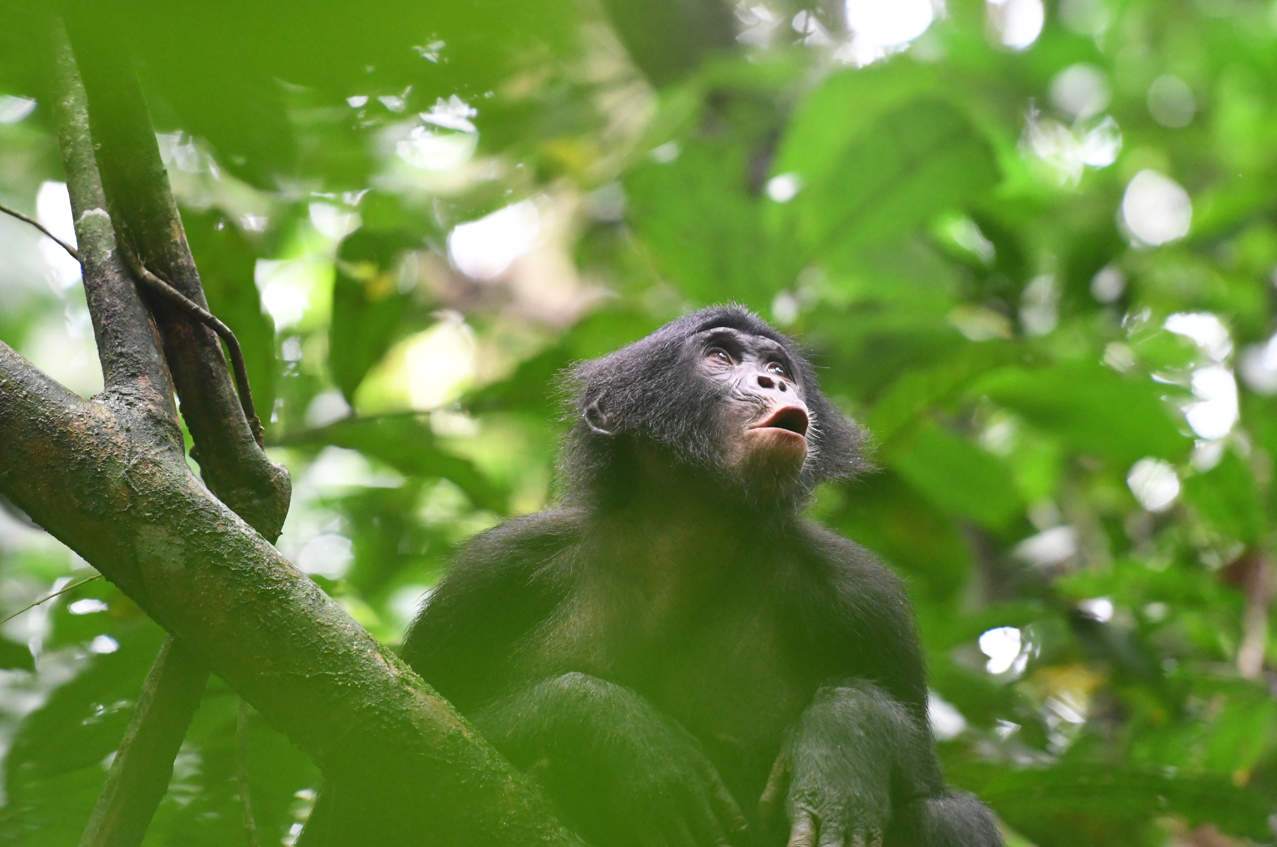The hoots and whistles of bonobos may seem like simple, wild calls, but a closer listen reveals that their communication shares more structural similarities with human language than once thought.
Bonobos are the most vocal of the great apes, using a variety of high-pitched calls to communicate with other members of the species. Some of the vocalizations are loud whistles and hoots that travel across the jungle, while others are quiet “peeps” and grunts meant for more intimate moments. The species might be very similar in shape and size to chimpanzees, but their calls are an octave higher than chimp calls.
In a new study, scientists at the University of Zürich and Harvard University took a close look at the communication of wild bonobos and found that the calls are deeply complex. Furthermore, the vocalizations share many of the key features that make human language.
The team analyzed 700 recordings of bonobo vocal calls and pinpointed over 300 contextual features associated with each chattering. Like human language, bonobo vocalizations exhibit compositionality, meaning they combine a finite set of call types into meaningful structures.

Mia, a young bonobo female from the Fekako community, vocalizing in response to distant group members.
Image credit: Martin Surbeck/Kokolopori Bonobo Research Project
In linguistics, compositionality comes in two forms: trivial and nontrivial. In trivial compositionality, each word in a combination retains its independent meaning, and the overall meaning is simply the sum of its parts. For example, a “blonde dancer” is both blonde and a dancer, and if that person is also a doctor, we can easily call them a blonde doctor without changing the meaning of “blonde.”
On the other hand, nontrivial compositionality works differently because one word modifies the other in a way that changes its meaning. For instance, we could say “bad dancer”, but this doesn’t mean a bad person who happens to dance. Rather, it means someone who isn’t good at dancing. If this person is also a doctor, we can’t assume they’re a bad doctor just because they’re a bad dancer. In this case, “bad” doesn’t have an independent meaning, it only makes sense in relation to “dancer.”
This type of compositionality is what gives human language its flexibility and complexity – and it turns out, bonobos have mastered it too. The hundreds of recordings showed that bonobo calls combine different sounds in four compositional structures, three of which exhibit non-trivial compositionality.
A bonobo emits a subtle peep before the whistle, to denote tense social situations (here, the bonobo is performing a display in front of the other group members by dragging a branch). Credit: Mélissa Berthet
Bonobos are our closest living relatives along with chimpanzees, both sharing around 98.8 percent of their DNA with humans. By studying the vocalizations of our great ape cousins more closely, we may gain insight into how human language evolved into the complex system we speak today.
The study is published in the journal Science.
Source Link: Scientists Listened To Bonobo Calls And Found Remarkable Similarities With Human Language